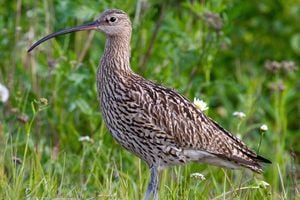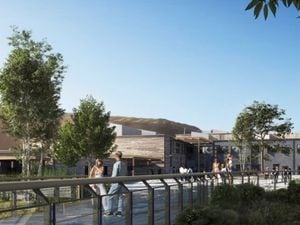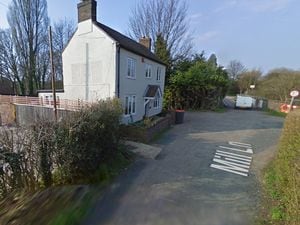Funding approved to preserve Shropshire nature reserve
Funding has been approved to preserve one of Shropshire's biggest nature reserves as part of a £5 million project.

The money will be used over the next five years to buy more of land, raise water levels and restore habitats around the Fenn's, Whixhall, Bettisfield and Wem Mosses.
The Marches Mosses are Britain's third largest raised bog and cover an area equivalent to 1,000 football fields, with one third of that in Shropshire and the rest in Wales.
The people behind the Marches Mosses BogLIFE Project said it will help transform the area into of Europe's finest wildlife sites.
They said Natural England's largest European-funded LIFE project of its kind to date is not only great news for internationally important bog plants and animals, but for people who will be able to enjoy the beauty of the unique landscape.
Dr Joan Daniels, Marches Mosses BogLIFE Project Officer, said: "We are overjoyed, after two years of hard work by our external funding team and colleagues, to have received funding to put the mosses on a much better footing to face the future.
"Our large heath bog butterflies, our rare white-faced darter dragonflies, our curlew and our endless rare species will be thrilled that the Mosses are coming back to LIFE."
The ambitious £5 million package of improvements will be delivered in a partnership led by Natural England, together with Natural Resources Wales and Shropshire Wildlife Trust.
The funding will pay for the acquisition of a further 63 hectares, or 156 acres, of peatland, and enable water levels to be raised to improve the raised bog habitat.
New restoration techniques such as contour bunding will be utilised to help the mosses retain more water and prevent the peat decaying further, helping to counteract the effects of climate change.
In addition, the project also aims to restore swamp, fen, willow and alder carr wet woodland, habitats missing from the edge of the bog.
These areas will provide homes for willow and marsh tit and rare bog wildlife such as elongated sedge, micro-moths Phyllonorycter dubitella, Coleophora alnifoliae, Apotomis semifasciana, Ancylis apicella,and Sorhagenia janiszewskae and the purple bordered gold moth.
Wil Sandison, Natural Resources Wales' Reserves manager, said: "Healthy peat bogs are rare, provide habitats for special wildlife and bring a huge benefit when it comes to climate change so it's important to maintain them as best we can.
"A healthy peat bog doesn't just store carbon in peat laid down over thousands of years, but constantly forms new peat, locking up more carbon each year."
The LIFE project will also tackle air and water pollution issues on the bog, with 4.5km of mineral-rich ditch being diverted, but more notably with oily debris and 100,000 tyres from Shropshire Wildlife Trust's recently purchased Whixall Moss scrapyard being cleaned up.
John Hughes, of Shropshire Wildlife Trust, added: "The challenge is to transform this former industrial site into a fantastic visitor attraction with a new café, playscape and trails linked to a new bird hide. This is a very brave venture for the Partnership – this scrapyard floats on deep peat and if it continued in industrial use we couldn't restore the surrounding bog."
The partnership still needs to raise funds to match the LIFE funding, which covers 75 per cent of costs.
Shropshire Wildlife Trust is appealing people to help support the restoration efforts by making a donation through the website www.shropshirewildlifetrust.org.uk





